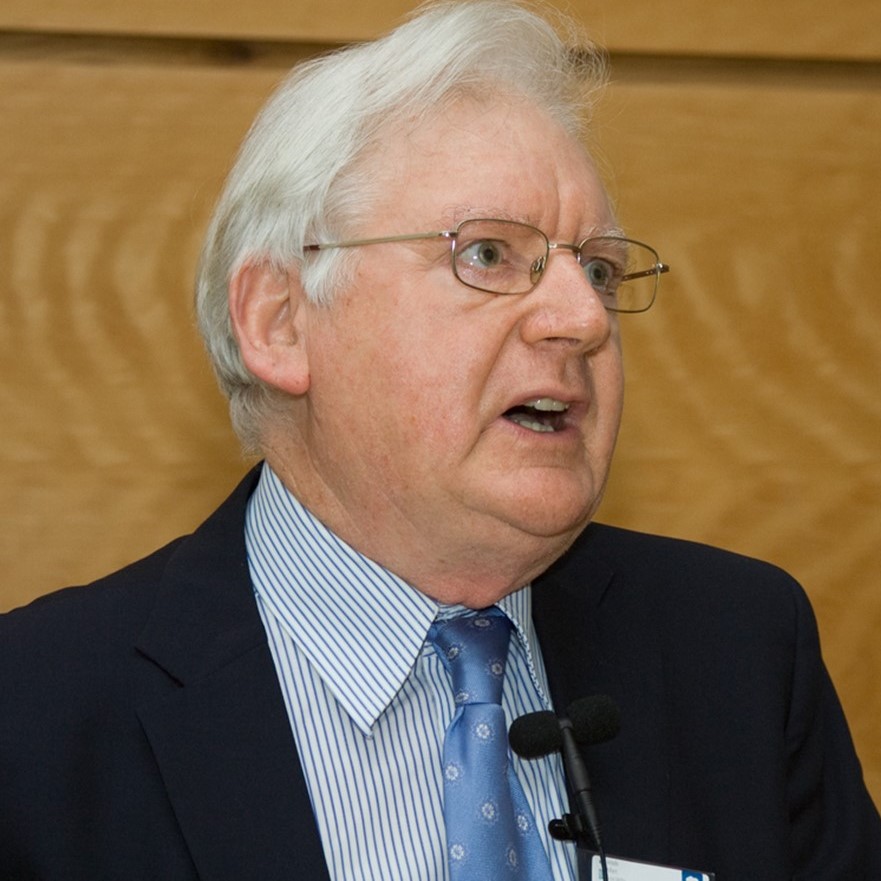Met Éireann honours the life and achievements of Prof J. Ray Bates PhD, former Assistant Director at Met Éireann, former Branch Head at the Laboratory for Atmospheres, NASA, Goddard, Maryland, Emeritus Professor of Meteorology at the University of Copenhagen, and Adjunct Professor of Meteorology at University College Dublin, who has died on 6th January 2024.

Prof Bates speaking at the Irish Meteorological Society’s celebration, marking 75 years of Met Éireann in 2011. Image by Brendan Noonan.
Met Éireann’s esteemed colleague Prof Bates was a distinguished meteorologist and climate scientist and a pioneer in the fields of atmospheric dynamics and Numerical Weather Prediction (NWP). Prof Bates made significant contributions to the understanding of the dynamics and thermodynamics of the atmosphere and played a crucial role in developing NWP for operational weather forecasting. He was a respected and influential voice in the scientific community, as well as a mentor and friend to many colleagues and students. His rigour and passion for science are well known.
Bates’ remarkable career
Prof Bates graduated from University College Dublin (UCD) in 1962 with a B.Sc. in Physics, going on to receive a PhD in Meteorology from Massachusetts Institute of Technology (MIT) in 1969 under the supervision of Prof Jule Charney. Charney led the group that produced the first computer generated weather forecast, on the ENIAC computer in 1950, which paved the way for modern weather forecasting.
Prof Bates joined the Irish Meteorological Service (now Met Éireann) in 1963, where he rose to the positions of Head of Research Division and Assistant Director. As part of his work in the National Meteorological Service, he served as Chairman of the Scientific Advisory Committee for the European Centre for Medium Range Weather Forecasts (ECMWF), from 1978 to 1981.
In 1987, Prof Bates moved to the United States, where he worked as a Senior Scientist and Branch Head at the Laboratory for Atmospheres, NASA Goddard Space Flight Center, until 1995. He then returned to Europe and became Professor of Meteorology at the Niels Bohr Institute, University of Copenhagen until 2004, and then he became Adjunct Professor of Meteorology at UCD (2004-2023).
Prof Bates published over 100 peer-reviewed papers and book chapters. He received numerous awards and honours, including the Fellowship of the Royal Meteorological Society, the American Meteorological Society and the Royal Irish Academy. He was also a founder member, and later President, of the Irish Meteorological Society.
His crucial work on Numerical Weather Prediction for Ireland and beyond
While working in Met Éireann, Prof Bates acquired a copy of the Limited Area Primitive Equation Model (LAPEM) for use in the Met Service, through his friendship with the Serbian-American meteorologist Fedor Mesinger. This model, originally developed at Belgrade University, was implemented on a Digital DEC 20-50 computer, the first mainframe computer of the Irish Meteorological Service, and provided forecast guidance from 1980 until the introduction of the HIRLAM model in 1994.
Prof Bates also worked within the Research Division at Met Éireann to adapt and implement an objective analysis system for observational data processing, a key component of the weather forecast model. The original system was constructed by Nils Gustafsson of SMHI, who visited Dublin in 1978 to assist with the initial implementation.
Following an encounter with the renowned Canadian meteorologist André Robert, Prof Bates recognised the great potential of Lagrangian integration methods and led the implementation in 1982 of the first-in-the-world operational application of a semi-Lagrangian scheme in weather forecasting. He authored or co-authored about a dozen key papers, developing and implementing several major improvements, which have now become standard in Lagrangian integration.
As a result of Prof Bates’ work, Ireland led the world in the application of Lagrangian methods for weather forecasting. Semi-Lagrangian integration is now a central plank of Numerical Weather Prediction, and is found in the operational systems of most national weather services. In 1994, NASA presented Prof Bates with a Scientific Achievement Award “For leadership and pioneering work in the development of semi-Lagrangian models for climate and weather prediction”. His rigour, commitment and passion were instrumental to advance weather and climate science and will always be remembered.
—————————————–
Our warm thanks to Prof Peter Lynch for information on Prof Bates’ NWP work. You can read more about the work of Prof Bates and other colleagues on developing weather forecasting in this article from Prof Lynch: The Development of Computer Weather Forecasting in Ireland.